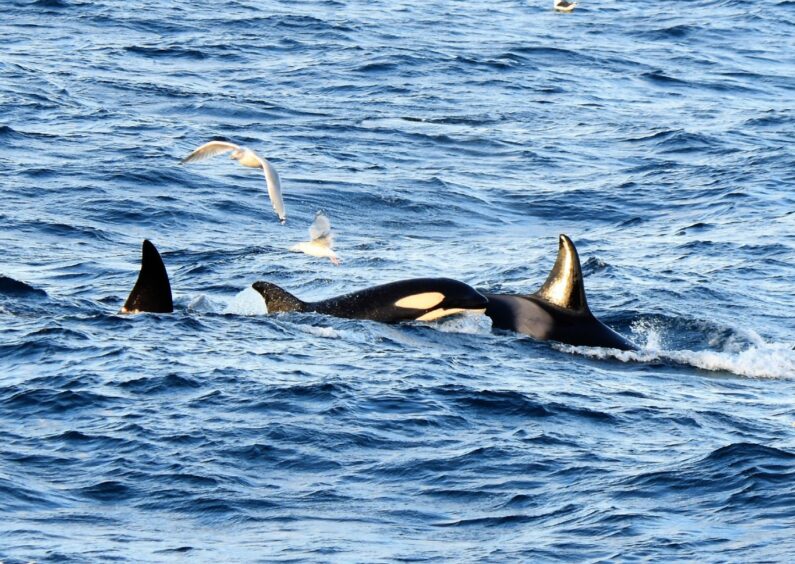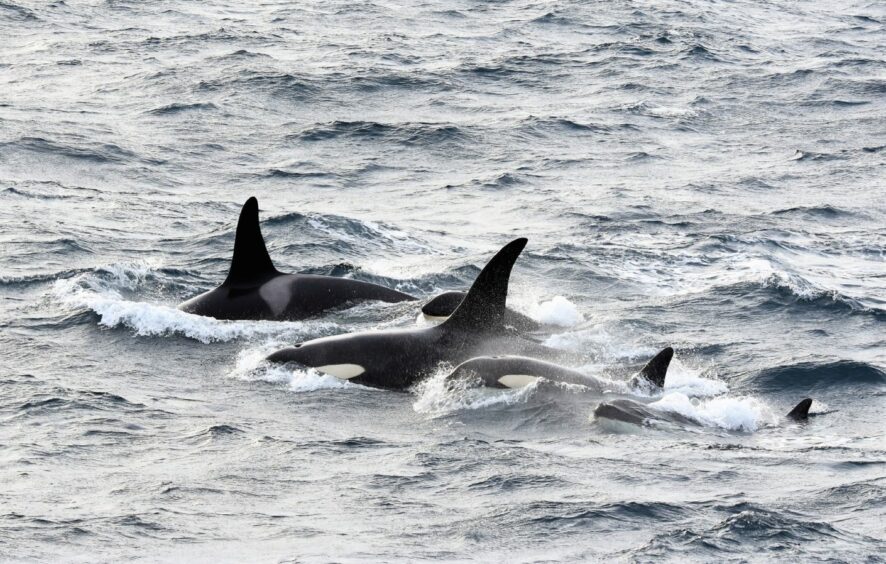A rolling dark fin and an arched back momentarily broke the surface of the sea a couple hundred yards astern of the mackerel trawler, Resolute, 18 miles south-east of Sumburgh Head, Shetland.
Or was it just a flicker of the imagination and my hopeful mind was playing tricks?
I looked again, and another fin, then several more, broke in among the white-frothed wake of the vessel.
This was no illusory dream, but a real-life pod of orcas, following the trawl in the hope of snapping-up mackerel spilling from the net.
A wave of euphoria swept over me, for only a few months previously I had scoured the voes and rugged coastline of Shetland in search of orcas, but they had remained tantalisingly elusive.
Thus, when co-skippers Matty West and Ally West invited me for a fishing trip on their mackerel vessel, the Fraserburgh-based Resolute, I eagerly accepted because it presented a unique opportunity to see these elusive whales.
And what a show they put on, often keeping station on either side. or astern, of the vessel, before then swooping close-in to eat the fish being herded by the trawl.
Orcas around northern Scotland exhibit fascinating behavioural differences.
Rob Lott, policy manager for Whale and Dolphin Conservation, tells me that the inshore population of orcas seen hugging the coastline of Shetland, which often feed on seals, are different from the ones I had witnessed further offshore, which specialise on mackerel, herring, and other fish.
“Trawler crews have often noticed that the waters around the boat have no sign of any orcas, but when fishing operations commence, they suddenly appear,” he says.
“Maybe it’s the sound of the winch or a change in the trawler’s engine revs that alerts the orcas and is used as a cue for them to approach the boats – almost like a dinner bell. Once alongside, the orcas feast on mackerel that escapes the nets.”
Some pods following the fishing fleet have comprised of more than 100 individuals and it’s not just off Scotland this has been observed.
Groups of orcas that follow the herring fleet along the coast of Norway employ a similar strategy.
Orcas that feed on mackerel have worn down teeth and researchers believe this is a result of sucking up the fish one at a time.
The suction, along with the abrasive properties of sea water, wear the teeth down. Interestingly, the inshore orcas around Scotland that prey on seals and other marine mammals show no tooth wear.
After the first trawl tow, the mackerel catch was brought onboard, and the net was shot once more for a final tow.
As it was being winched back in again, right below my vantage point on the stern, a young orca calf momentarily appeared, flanked on either side by a protective pair of adults, one of whom was presumably the mother.
They quickly slipped below the waves again, leaving behind the wild churn of the sea. Tears began to fleck my cheeks, for I knew I had just witnessed something truly special.











